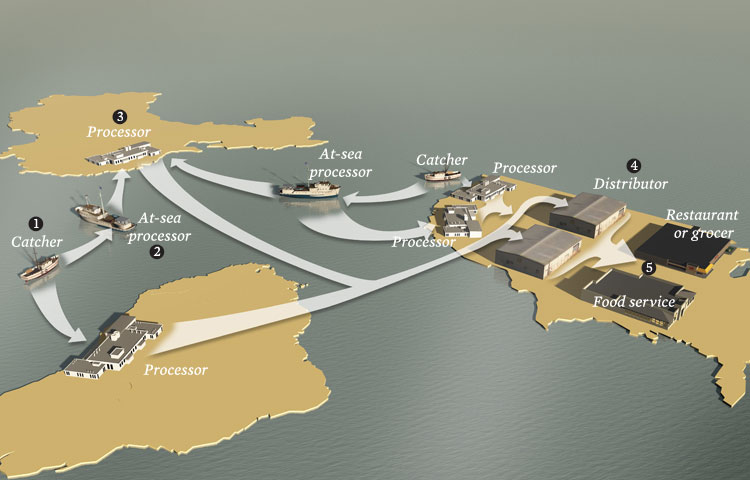Oceana teamed up with artist Don Foley to produce this infographic illustrating how our delicious seafood gets from hook to the icy fish case in our local food store. Shockingly, Oceana states that “Eighty-four percent of seafood eaten in the U.S. is imported, and it follows an increasingly complex path from a fishing boat to our plates.” Check out more on the nitty gritty 5-step process here.

It certainly is an eye opener and a wake up call. I once heard Sylvia Earle say that the best way she can think of to save the oceans is to not eat seafood from them. I think I might be getting close to that orthodox and the first step might be to curb the seafood purchases from anywhere not listed as sustainable even if I know the fishery is not in trouble. To help this lifestyle change I use ProjectFishMap.
Project FishMap is an application produced by Monterey Bay Aquarium that asks you to submit information when you find a restaurant or market that advocates sustainable seafood. As the map grows we can see what spots are the gems of the neighborhood. Click here for some more marine science apps for your smartphone.
Image (c) Oceana/Don Foley.








What people are saying …